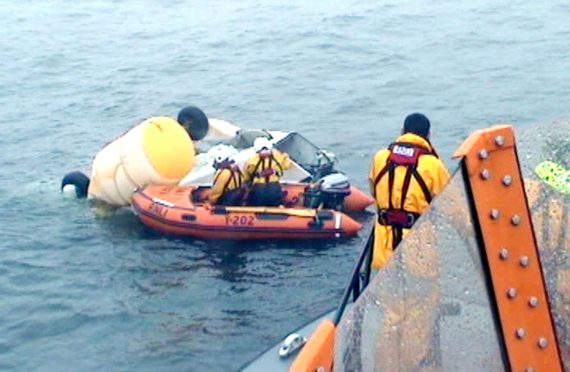A senior air accident investigator ruled out any suggestion of gearbox failure in a horror helicopter crash off Shetland.
Adrian Cope, a senior inspector for the Air Accidents Investigation Branch with 12 years expertise in aviation engineering, said the model of helicopter – the Super Puma – had a history of gearbox problems which have previously resulted in well-known offshore ditchings, and this had been a focus of their investigation.
A fatal accident inquiry is being heard virtually into the crash which happened just under two miles west of Sumburgh Airport on August 23, 2013.
Four offshore workers died on the day, while a fifth victim committed suicide four years later.
Survivors have described feeling “vibrations” on the aircraft moments before the crash, with one saying he heard a sound “like something tearing itself to bits”.
He added: “At the time I thought the gearbox had gone.”
Mr Cope told the fourth day of the inquiry yesterday: “There was no evidence of a causal or contributory fault with the helicopter either before or during the accident.”
He added: “No evidence was found that would indicate the helicopter had not been maintained or certified in accordance with current regulations.”
Mr Cope said he was informed of the tragedy just hours after it happened and he flew north to Shetland the following day with colleagues.
They witnessed the recovery operation of the wreckage and also the cockpit voice recorder.
Mr Cope said: “We looked at a number of sources of evidence. We recovered all the records of the aircraft from the operator, the maintenance history, the flight recordings, the maintenance.
“There was nothing in these items which suggested there was an ongoing problem [with the helicopter].
“Once we recovered data from the flight recorder there was nothing to suggest there was an issue.”
Advocate depute Martin Richardson asked: “If it was suggested that there was a problem with the helicopter’s gearbox, how would such a problem manifest itself and how would you investigate that?”
Mr Cope replied: “There is a history of gearbox problems with this model of Super Puma Range. It is not a surprise that was the first thing that occurred to people as the cause of the accident.
“We looked at quickly … ruled it out. We looked at the wreckage, recovered the gearbox and investigated it internally.
“In previous occasions with gearbox failure it was badly damaged, as were the rotor blade. Not in this case.
“The recovered data showed the helicopter was flying as it should right up to the last minute.”
The victims were offshore workers travelling onboard a Eurocopter AS332 Super Puma helicopter belonging to CHC Helicopters when it crashed on approach to Sumburgh Airport.
The aircraft was flying workers off the Borgsten Dolphin oil platform to Aberdeen, but was about to make a refuelling stop in Shetland.
Mr Cope was speaking to a AAIB report in 2016 which said flight instruments were “not monitored effectively” by the pilots in the moments leading up to the crash.
The AAIB said a lack of monitoring meant a reduction in air speed was not noticed by the pilots and attempts to recover control were too late.
The report also said the impact with the water had been “survivable”.
One of the four victims had been unable to escape, one was incapacitated by a head injury, one drowned before reaching the surface and the other died in the life raft from a chronic heart condition.
The inquiry continues.










